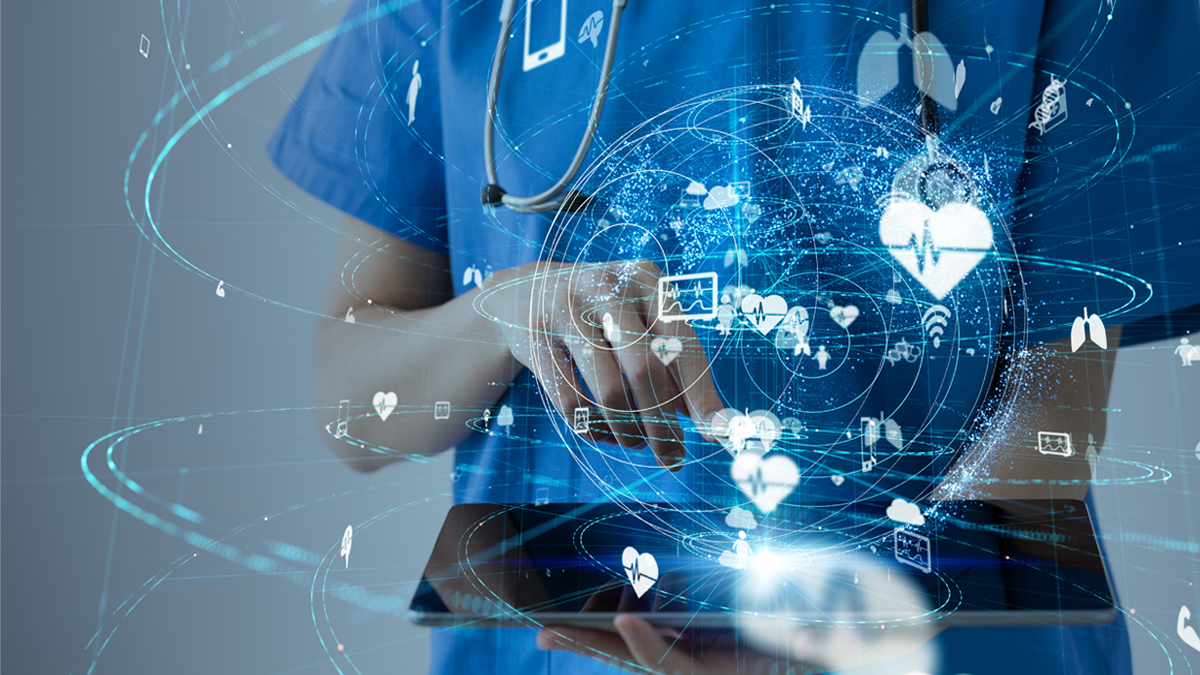Internet of Medical Things (IoMT) is Revolutionizing Healthcare, but the Cybersecurity Threat is Real
By Michele Robinson-Pontbriand | Director Corporate Social Responsibility

The healthcare industry is being revolutionized by developments in Internet of Things (IoT), or more specifically the Internet of Medical Things (IoMT) — also known as Healthcare IoT. Nothing is more consumer-visible of this fact than the pervasiveness of medial wearables, such as smart watches and bands. A wide variety of such wearables, along with other connected biosensors, provide the ability to monitor various health metrics and automatically send that data to other devices or even directly to physicians. Data collected can then be analyzed to diagnose and treat patients, prescribe targeted and personalized medicine, as well as improve communication and workflow for medical staffs.
In turn, these remote health monitoring capabilities are driving a shift from hospital and office care to private care at home through telehealth appointments, for example. This is great news in enabling quality healthcare, particularly for patients living in remote areas with limited local access to medical professionals for regular health management. However, these new ways of monitoring, collecting, and reporting patient information pose challenges in securing personal healthcare data.
Security of Healthcare Data
Healthcare IoT is defined as the collection of medical devices and applications that connect to healthcare IT systems through online computer networks. As such, healthcare cybersecurity is a growing concern given that sensitive health data is a preferred target of hackers. There have been several large security breaches and hacking cases over the last few years and many healthcare organizations have struggled to defend against cybercriminals. A report last summer noted that 82 percent of healthcare organizations’ IoT devices were targeted with a cyberattack within the previous year1.
With the sheer volume of health data created from billions of connected medical devices, securing the device, and ultimately the data, is a responsibility that needs to be acknowledged across parties.
- Medical device manufacturers, for example, must now integrate new requirements to maintain compliance with the European Union’s General Data Protection Regulation (GDPR) that went into effect on May 25, 2018. The FDA has also taken a step to develop a five-point action plan that requires them to incorporate capability to update devices throughout the entire life cycle of the products.
- Healthcare administrative and healthcare practitioners should acknowledge the fact that the cybersecurity threat is real. Without strong security measures, they are putting themselves and their patients at risk. They should consider taking steps to improve their network security and employ a set of comprehensively defined security practices.
The threat is real, and only through combined efforts across all parties can the security of healthcare data be achieved.
Supporting the Healthcare Revolution
The healthcare revolution is just getting started, promising to help medical professionals better serve patient health while providing a more expansive healthcare infrastructure to patients. Keysight is ready to assist in enabling this revolution by providing a broad range of design, test, and monitoring solutions for healthcare IoT, including the security of personal health information.
Learn more about how Keysight is helping aid this revolution at http://www.keysight.com/find/healthcareiot
References

